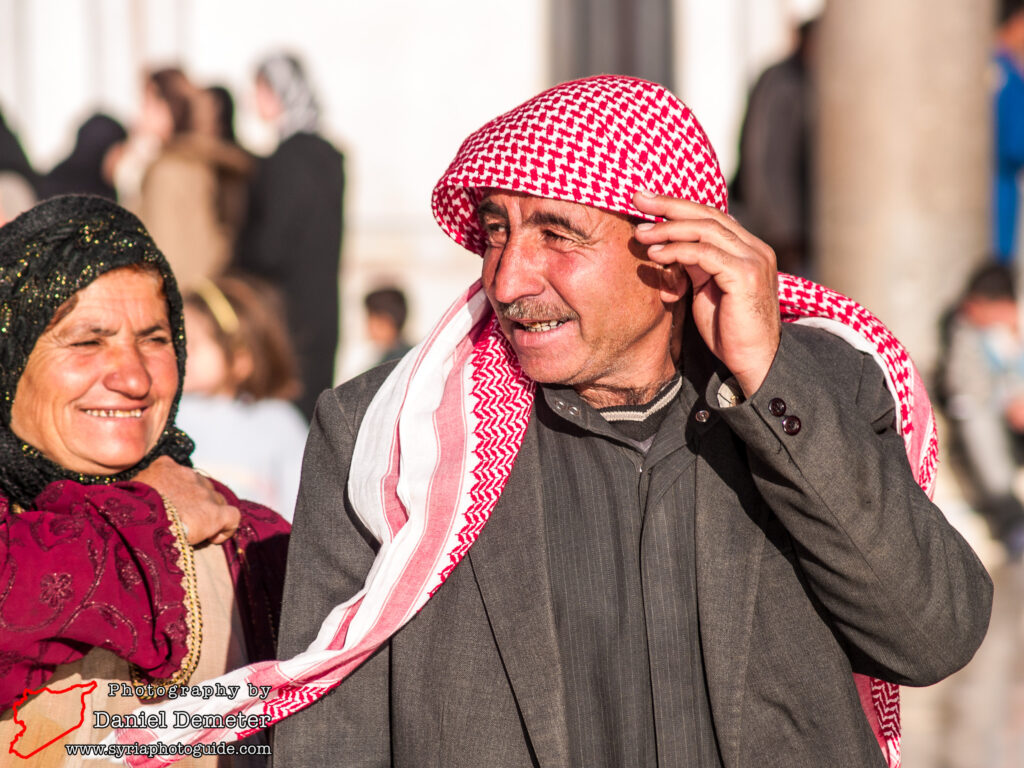Damascus – People دمشق – شعب

The capital of Syria is one of the most diverse cities in the country and presents a fascinating variety of religious, ethnic and cultural heritage. Historically, the population of Damascus (دمشق) has been predominantly Sunni Muslim since the establishment of the Umayyad caliphate, when mass conversions took place. Despite the city being under control of Shiite rulers during the later Abbasid and Fatimid periods, the population remained predominantly Sunni. This remains true today, with Sunni Muslims representing a significant majority of the city’s estimated population of 2,650,000.
Damascus (دمشق) has maintained a sizable Christian minority since the arrival of Islam, however. Today, this community is focused on the old city district of Bab Touma (باب توما) and the nearby modern neighborhoods of al-Qassaa (القصاع) and al-Ghasani (الغساني). The Druze have long sustained a presence in Damascus (دمشق) as well, and today their community is centered on the southeastern suburb of Jaramana (جرمانا). This neighborhood expanded rapidly after the 2003 war in neighboring Iraq, hosting tens of thousands of refugees from that country. Damascus (دمشق) was also a major destination for Palestinian refugees of the 1948 and 1967 wars, who settled in several camps to the south of the city. These camps subsequently developed into major urban areas. Of these, al-Yarmouk (اليرموك) is the largest and most well-known.
The city is also home to a dwindling Jewish population, most of which emigrated to Brooklyn, New York in the early 20th century. This community was once centered in the southeastern neighborhood of the old city known as Harat al-Yahoud (حارة اليهود). Today, fewer than two dozen Jewish residents remain in the city, all over sixty years of age. Other religious sects, such as the Alawite and Shiite, were not represented in the city in substantial numbers until last century. As members of the Alawite community moved into important positions in the Syrian government under Hafez al-Assad (حافظ الأسد), their population in Damascus (دمشق) began to increase markedly. They reside primarily in neighborhoods in the city’s northwest, particularly Mezzeh Jebel 86 (مزة جبل ٨٦). The Shiite community has long maintained a small presence around important religious shrines such as al-Seida Zeinab (السيدة زينب) and al-Seida Raqiyeh Mosque (جامع السيدة رقية) in the old city neighborhood of al-Amara (العمارة). Many Lebanese and Iraqi Shiites have moved into these areas in the last decade. The growing Alawite and Shiite populations have at times been a source of tension and resentment among some Damascene families, who have simultaneously seen their power and influence decline.
Finally, the neighborhood of al-Salhiyeh (الصالحية), north of central Damascus (دمشق) and on the southern slopes of Jebel Qasioun (جبل قاسيون), was originally founded under the Ayyubids and settled by Kurdish refugees. While this population long ago assimilated into the Arab culture of the city, Kurds remain a sizable ethnic minority in Damascus (دمشق). Many also reside in the adjoining neighborhood of Rukn al-Din (ركن الدين). The city also hosts small numbers of other ethnic minorities such as Armenians, Turkmen, Circassians, Chechens, Albanians and Bosnians. Damascus (دمشق) tends to be more socially liberal than most of Syria, with the notable exception of the coastal cities of Lattakia (اللاذقية) and Tartus (طرطوس). This varies considerably by neighborhood, however, with some areas of the city exhibiting a very liberal and cosmopolitan atmosphere and others maintaining a very conservative and traditional character.
The majority of these images were taken in and around the Umayyad Mosque (الجامع الاموي) and represent a glimpse of the more traditional and conservative segment of the population. This album is not meant to reflect the diverse demographics of the city.
Meow Gallery: There was an error while building the gallery. Check your PHP Logs.
